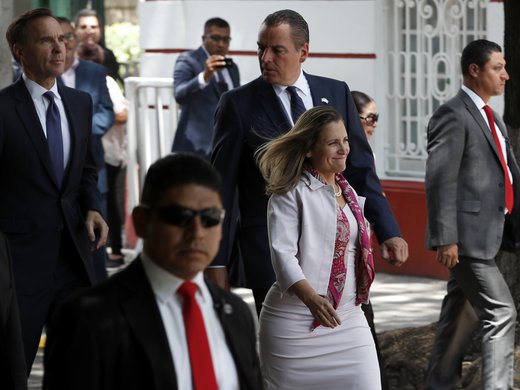The all-important issue of auto trade is the pinnacle for securing an agreement in principal in the North American Free Trade Agreement (NAFTA), a prelude to the comprehensive agreement on a renewed NAFTA.
At loggerheads with Canada and Mexico but with agreement on the horizon, since the beginning US President Donald Trump’s central campaign promise was to bring back jobs to the auto sector, a promise he intends to fulfill by raising the domestic content threshold required through NAFTA and by introducing a new wage standard. However, will this really bring industry jobs back to America?
President Trump will claim that the new provisions for the auto industry, which reportedly includes a required minimum $15-an-hour wage rate to qualify for duty-free trade (on the more value-added vehicle assembly and parts jobs) and an increase in North American content form 62.5 per cent to 75 per cent (down from the originally proposed 85 per cent), fulfill his campaign promise to autoworkers. Reports also state that the new agreement will add steel and aluminum into the tracing list in exchange for a permanent exemption for both Canada and Mexico from the Section 232 steel (25 per cent) and aluminum (10 per cent) tariffs which is scheduled to be imposed by the United States on May 1.
The increase in minimum wage is a contentious issue for Mexico. It pits the industry’s interests against the broader interests of a government soon heading into elections. Hourly wages in Mexico’s sprawling parts plants average US$2.50 to US$5.50 an hour; a small fraction compared to what is proposed under the new rules of origin regulations for some of the more value-added segments of vehicle production.
The Mexican industry is also vehemently opposed to any agreement that mandates huge wage increases. Many workers already earn over double the average manufacturing wage in the country. But even the pro-business Pena Nieto government must tread lightly given the sensitivities heading into the presidential elections. The regime’s left-wing opponent, Andres Lopez Olbrador, is making the lack of wage growth a central campaign issue.
The new proposed NAFTA terms for the auto sector could signal a decisive turning point for an industry that has continually moved production and jobs from the United States and Canada to Mexico. But will the changes really bring back industry jobs? The answer will depend critically on what the new agreement doesn’t specify. Mainly, what is the penalty for non-compliance?
Currently, America’s most favoured nation tariff on passenger cars and light trucks is a measly 2.5 per cent, ranking as one of the lowest in the world. America’s trade rival, China for example imposes a 25 per cent tariff on vehicle imports, although they recently announced possible concessions. Assembly and parts producers could always choose to pay the tariff instead of complying to NAFTA’s current rules of origin regulations to benefit from duty free access to the US market.
If I were a shareholder in a Canadian parts giant like Magna or General Motors, I know how I would want management to respond to the new rules. Instead of generously providing a substantial wage increase (enough to gobble up most of the profit margin gained by moving production to Mexico), I’d gladly pay the 2.5 per cent tariff for non-compliance and leave supply chains firmly rooted where they are.
I’m sure that aspect of profit-maximizing behaviour has not been lost on US trade negotiator Robert Lighthizer. His marching orders from the White House was to bring back jobs, an objective that incidentally the United States industry does not share. Whether he accomplishes that goal depends on whether the Unites States’ most favoured nation tariff on vehicles changes.
Higher tariffs for non-compliance would likely compel corporations to meet the new rules of origin requirements. However, without such a strong incentive for compliance it’s highly debatable what economic impact, if any, the new standards will have.
This article originally appeared in the Toronto Star.



